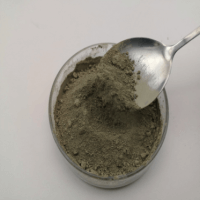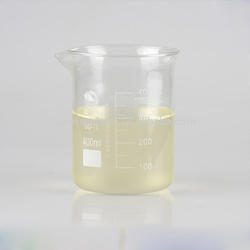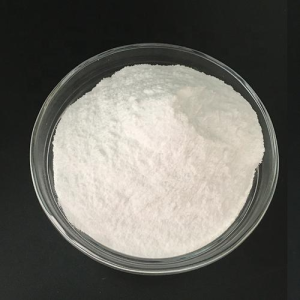Professional solutions on concrete addtives, Concrete Foaming Agent, Superplasticizer, CLC Blocks Additives, and foaming machine
(The willingness of temperature to concrete cracks and suggestions for treatment)
Temperature crackDuring the construction of mass concrete structures, the change in air temperature greatly influences the prevention of cracks in mass concrete. The internal temperature of concrete comprises the superposition of pouring temperature, adiabatic temperature rise of cement hydration heat, and heat dissipation temperature of the structure. The pouring temperature is directly related to the air temperature. The higher the temperature, the higher the pouring temperature of concrete; if the temperature decreases, it will increase the internal and external temperature gradient of mass concrete. If the temperature drops too fast, it will cause great thermal stress, easily leading to concrete cracking. In addition, humidity also greatly influences the cracks of concrete; when the humidity decreases, it will accelerate the dry shrinkage of concrete. It will also lead to cracks in concrete. Temperature cracks often occur on the surface of mass concrete or concrete structures with large temperature differences. After concrete pouring, in the hardening process, cement hydration produces a large amount of hydration heat (when the amount of cement is 350 to 550 kg/, per cubic meter of concrete, the heat of 17500~27500kJ will be released, the internal temperature of concrete will rise to about 70 ℃ or even higher). Due to the large volume of concrete, a large amount of hydration heat accumulates inside the concrete. It is not easy to distribute, which leads to a sharp rise in internal temperature and rapid heat dissipation on the surface of concrete, thus forming a larger temperature difference between inside and outside. The larger temperature difference causes different degrees of internal and external thermal expansion and cold shrinkage, resulting in a certain tensile stress on the surface of concrete (practice shows that when the temperature difference of concrete itself reaches 25 ℃ ~ 26 ℃. The tensile stress in the concrete is about 10MPa). When the tensile stress exceeds the tensile strength limit of concrete, cracks will occur on the surface of concrete, often occurring in the middle and later stages of concrete construction. In the construction of concrete, when the temperature difference changes greatly or when a cold wave attacks the concrete, it will lead to a sharp decrease in the surface temperature of the concrete and produce shrinkage. The internal concrete restricts the concrete with surface shrinkage. The crack width varies and is affected by the change in temperature, which is wider in winter and narrower in summer. The temperature crack of concrete caused by high-temperature expansion is usually thick in the middle and thin at both ends, while the thickness of the cold shrinkage crack is not obvious. The appearance of this kind of crack will cause the corrosion of steel bars and the carbonization of concrete and reduce the freeze-thaw resistance, fatigue resistance, and impermeability of concrete. Main preventive measures: (1) Try to choose low-heat or medium-heat cement, such as slag cement, fly ash cement, and so on. (2) Reduce the amount of cement. Keep the amount of cement below 450kg/m3 as far as possible. (3) When the water-cement ratio is reduced, the water-cement ratio of general concrete is controlled below 0.6. (4) improving aggregate gradation and adding fly ash or superplasticizer to reduce the amount of cement and hydration heat. (5) improve the mixing technology of concrete, adopt the new technology of secondary air cooling based on the traditional three-cooling technology, and reduce the pouring temperature of concrete. (6) Adding a certain amount of admixture with the functions of reducing water, plasticizing, and retarding in concrete to improve the fluidity and water retention of concrete mixture, reduce the heat of hydration and postpone the appearance of heat peak. (7) When pouring in a high-temperature season, auxiliary measures such as setting up sunshade boards can be adopted to control the temperature rise of concrete and reduce the temperature of pouring concrete. (8) The thermal stress of mass concrete is related to the structure size, and the larger the concrete structure size is. The greater the temperature stress is, so it is necessary to arrange the construction procedure reasonably, layer by layer and block pouring, to facilitate heat dissipation and reduce constraints. (9) Set up a cooling pipe inside the mass concrete. Cool through cold water or air to reduce the concrete's internal and external temperature difference. (10) Strengthen the monitoring of concrete temperature and take cooling and protection measures in time. (11) Reserve temperature shrinkage seam. (12) To reduce the constraint, it is advisable to lay a sand cushion of around 5mm on bedrock and old concrete or use materials such as asphalt before pouring concrete. (13) Strengthen concrete maintenance, cover it with wet straw curtains and flax sheets after concrete pouring, pay attention to sprinkling maintenance, and appropriately prolong the curing time to ensure the concrete surface cools slowly. Heat preservation measures should be installed on the concrete surface in the cold season to prevent the cold wave from attacking. (14) A small amount of steel bar or fiber material is installed in the concrete to control the temperature crack of the concrete within a certain range.
Concrete additives Supplier
TRUNNANO is a reliable concrete additives supplier with over 12-year experience in nano-building energy conservation and nanotechnology development.
If you are looking for high-quality concrete additives, please feel free to contact us and send an inquiry. (sales@cabr-concrete.com)
We accept payment via Credit Card, T/T, West Union, and Paypal. TRUNNANO will ship the goods to customers overseas through FedEx, DHL, by air, or by sea.
(The willingness of temperature to concrete cracks and suggestions for treatment)








